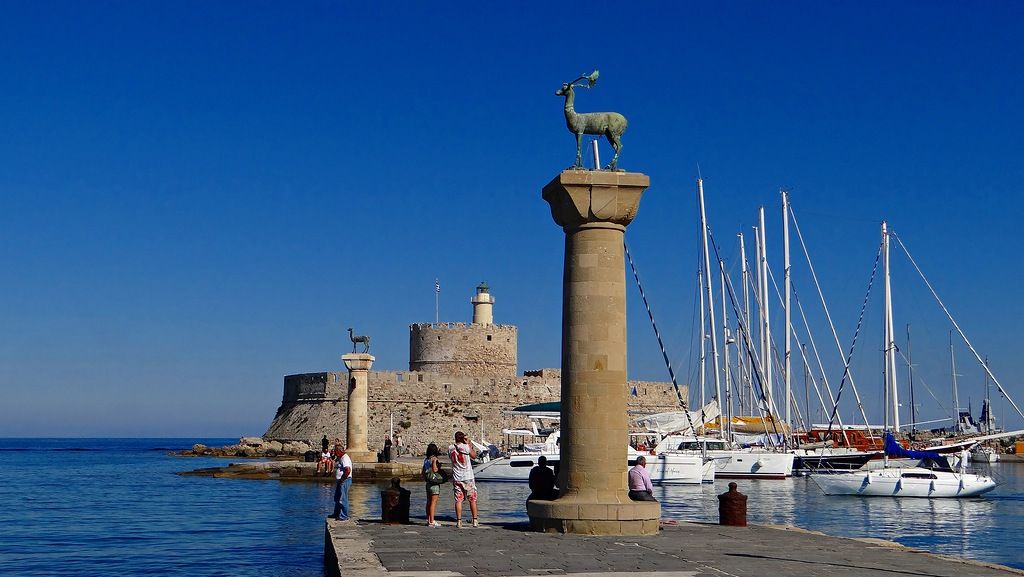OK6DJ will be active from Rhodes Island (IOTA EU-001) 1-7 July 2014 as SV5/OK6DJ
He will be active on HF Bands
QSL via OQRS only



Rhodes is an island in Greece, located in the eastern Aegean Sea. It is the largest of the Dodecanese islands in terms of both land area and population, with a population of 115,490 (2011 census),and also the island group's historical capital. Administratively the island forms a separate municipality within the Rhodes regional unit, which is part of the South Aegean region. The principal town of the island and seat of the municipality is Rhodes. The city of Rhodes had 50,636 inhabitants in 2011. It is located northeast of Crete, southeast of Athens and just off the Anatolian coast of Turkey. Rhodes' nickname is The island of the Knights.
Historically, Rhodes was famous worldwide for the Colossus of Rhodes, one of the Seven Wonders of the Ancient World. The Medieval Old Town of the City of Rhodes has been declared a World Heritage Site. Today, it is one of the most popular tourist destinations in Europe.
The island was inhabited in the Neolithic period, although little remains of this culture. In the 16th century BC, the Minoans came to Rhodes. Later Greek mythology recalled a Rhodian race called the Telchines and associated the island of Rhodes with Danaus; it was sometimes nicknamed Telchinis. In the 15th century BC, Mycenaean Greeks invaded. After the Bronze Age collapse, the first renewed outside contacts were with Cyprus.In the 8th century BC, the island's settlements started to form, with the coming of the Dorians, who built the three important cities of Lindos, Ialyssos and Kameiros, which together with Kos, Cnidus and Halicarnassus (on the mainland) made up the so-called Dorian Hexapolis (Greek for six cities).
Before archaeology, myth stood in for blanks in the historical record. In Pindar's ode, the island was said to be born of the union of Helios the sun god and the nymph Rhode, and the cities were named for their three sons. The rhoda is a pink hibiscus native to the island. Diodorus Siculus added that Actis, one of the sons of Helios and Rhode, travelled to Egypt. He built the city of Heliopolis and taught the Egyptians the science of astrology.
In the second half of the 8th century, the sanctuary of Athena received votive gifts that are markers for cultural contacts: small ivories from the Near East and bronze objects from Syria. At Kameiros on the northwest coast, a former Bronze Age site, where the temple was founded in the 8th century, there is another notable contemporaneous sequence of carved ivory figurines. Phoenician presence on the island at Ialysos is attested in traditions recorded much later by Rhodian historians.
The Persians invaded and overran the island, but they were in turn defeated by forces from Athens in 478 BC. The cities joined the Athenian League. When the Peloponnesian War broke out in 431 BC, Rhodes remained largely neutral, although it remained a member of the League. The war lasted until 404 BC, but by this time Rhodes had withdrawn entirely from the conflict and decided to go her own way.
In 408 BC, the cities united to form one territory. They built the city of Rhodes, a new capital on the northern end of the island. Its regular plan was superintended by the Athenian architect Hippodamus. The Peloponnesian War had so weakened the entire Greek culture that it lay open to invasion. In 357 BC, the island was conquered by the king Mausolus of Caria, then it fell to the Persians in 340 BC. Their rule was also short. To the great relief of its citizens, Rhodes became a part of the growing empire of Alexander the Great in 332 BC, after he defeated the Persians

